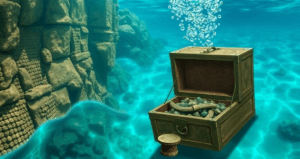Saya de Malha Bank: The Hidden Ocean Treasure at Risk – 5 Shocking Truths
The Saya de Malha Bank, a vast underwater plateau in the Indian Ocean, is home to the world’s largest seagrass meadow, playing a critical role in marine biodiversity and carbon storage. Located between Mauritius and Seychelles, this hidden ecosystem absorbs carbon dioxide at a rate 35 times faster than tropical rainforests, making it essential in the fight against climate change. For centuries, sailors avoided its unpredictable depths, but today, industrial fishing fleets, shark fin hunters, and seabed miners exploit its rich waters.
Despite its ecological importance, this fragile habitat remains unprotected, facing rapid destruction from human activities. UNESCO has recognized its potential as a Marine World Heritage site, yet no formal protections have been established. Seagrass loss continues at an alarming rate of 7% per year, threatening thousands of marine species that depend on it for survival. Without urgent conservation efforts, this invaluable ecosystem could be lost, weakening the ocean’s ability to sustain life. Safeguarding Saya de Malha is not just about protecting a remote seascape—it’s about preserving a natural carbon sink and a vital part of our planet’s future.

Saya de Malha Bank: The Hidden Ocean Treasure at Risk – 5 Shocking Truths
Tucked away in the Indian Ocean, far from the public eye, lies the Saya de Malha Bank—a shallow underwater plateau teeming with life. Often overlooked, this remote ecosystem is home to one of the planet’s largest seagrass meadows, stretching across an area as vast as Switzerland. Located more than 300 kilometers from the nearest landmass, between the islands of Mauritius and Seychelles, its isolation hasn’t stopped it from playing a vital role in supporting marine biodiversity and combating climate change.
A Name Steeped in History
The name Saya de Malha dates back over five centuries to Portuguese explorers, who were captivated by the wavy patterns of seagrass visible beneath the ocean’s surface. But its beauty concealed dangers. Early sailors avoided the area due to its unpredictable shallows and hidden depths, which made navigation treacherous. Old maps even marked the region with the ominous warning, “Here Be Monsters.” Today, the monsters are metaphorical but no less real: industrial fishing fleets, shark fin hunters, seabed miners, and wealthy adventurers now flock to these waters, drawn by its resources and mysteries.
A Climate Warrior Beneath the Waves
In 2012, UNESCO recognized the bank’s ecological significance, considering it for Marine World Heritage status. Scientists estimate that it hosts the world’s largest continuous seagrass meadow—an unsung hero in the fight against global warming. While rainforests capture carbon over decades, seagrass does so up to 35 times faster, locking away carbon dioxide in underwater sediments. This makes it a crucial ally in slowing climate change, offering a solution as practical as it is powerful.
A Sanctuary for Marine Life
Beyond carbon capture, the seagrass meadows of Saya de Malha serve as a thriving underwater metropolis. Thousands of marine species depend on them for food, shelter, and breeding grounds—many still unknown to science. From tiny fish to majestic sea turtles, this ecosystem sustains marine life on a global scale. Yet, this vibrant habitat is disappearing at an alarming rate. Since the late 1800s, nearly a third of the world’s seagrass has vanished, with losses now accelerating by 7% annually.
Under Threat
Human activity is the driving force behind this decline. Overfishing depletes key species, disrupting the delicate balance of the ecosystem. Industrial ships scour the seabed for minerals, destroying habitats in the process. Even well-meaning explorers can unintentionally damage fragile seagrass meadows. The consequences extend far beyond the Indian Ocean—without these seagrass fields, global fisheries, coastal storm protection, and climate regulation all suffer.
Why It Matters
The Saya de Malha Bank isn’t just a remote underwater wonder—it’s a lifeline. Its seagrass meadows help sustain marine life across oceans, support fishing-dependent communities, and store carbon that would otherwise accelerate climate change. Protecting it isn’t just about saving a single ecosystem; it’s about preserving the balance that keeps our oceans—and our planet—healthy.
The Race to Protect
Despite UNESCO’s recognition, Saya de Malha remains unprotected. Without urgent action, unchecked exploitation could erase this ecological treasure. Conservationists are calling for international cooperation to establish marine reserves, ban destructive practices, and support further research. The challenge is immense, but the stakes are even higher: losing this seagrass meadow would not only set back climate efforts but also rob future generations of an irreplaceable marine marvel.
In a world where the ocean’s secrets often go unnoticed, the Saya de Malha Bank serves as a powerful reminder that some of Earth’s most vital ecosystems lie hidden beneath the waves. Its story is a call to action—to protect what we cannot always see but cannot afford to lose.
You must be logged in to post a comment.